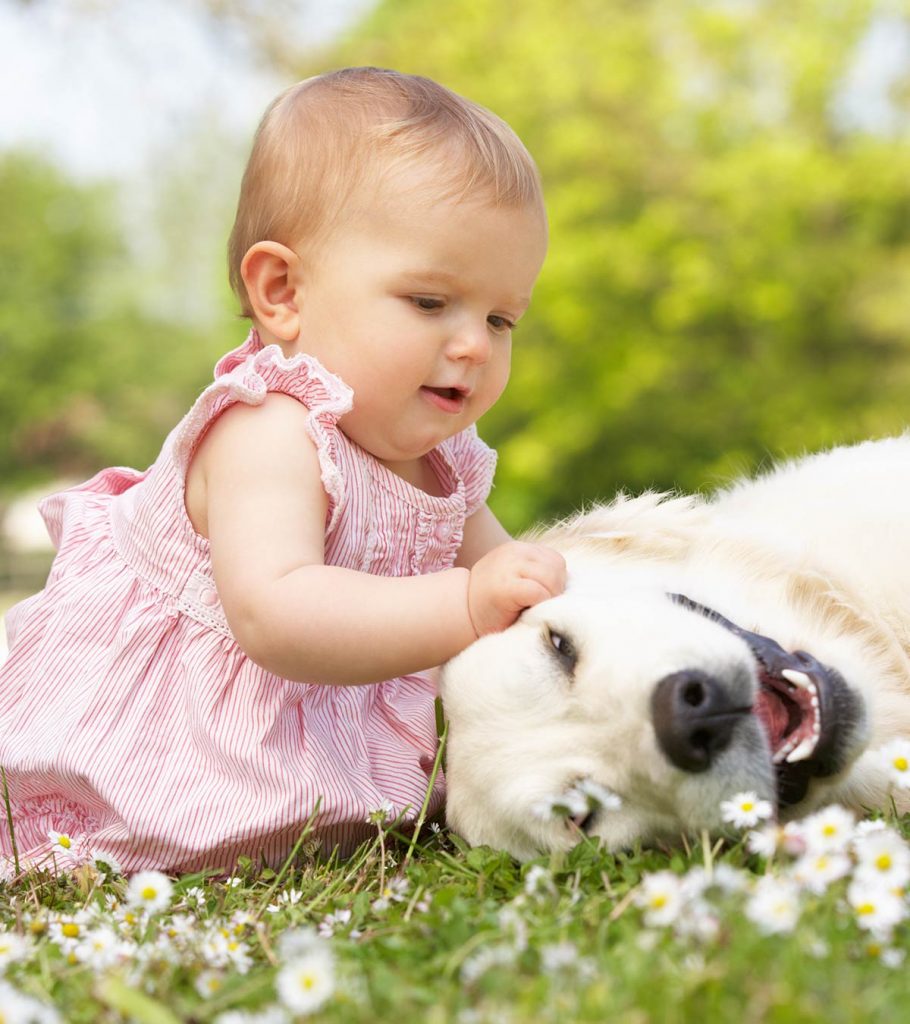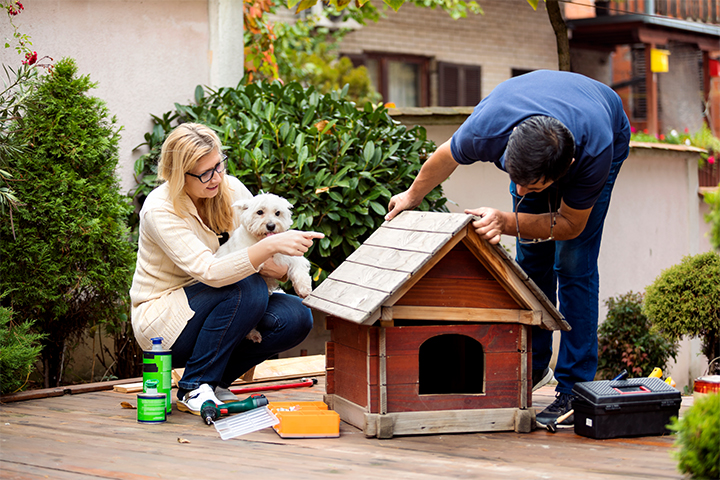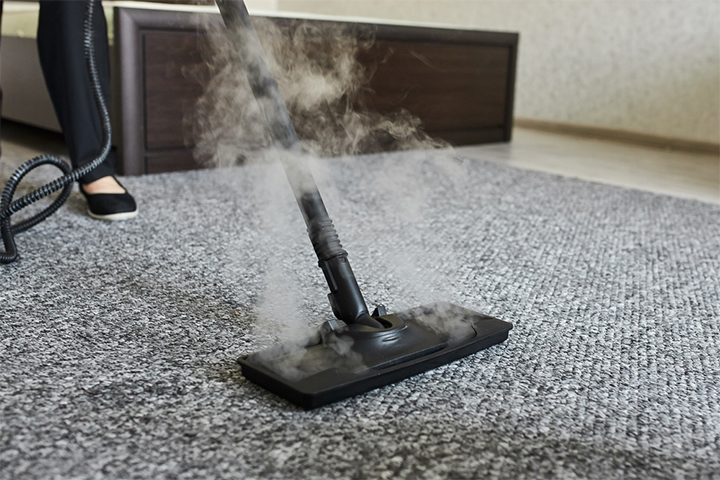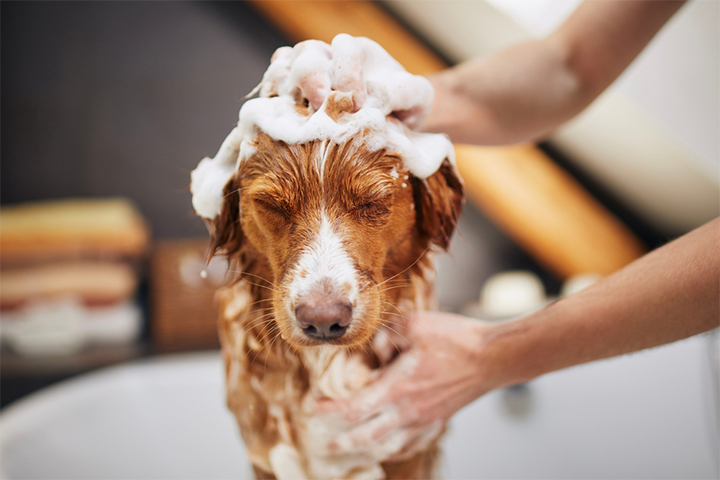Dog, cat or other animal allergies may affect 10 to 20% of people worldwide and are public health concerns (1). Dog allergy in babies may be due to the fur the dogs shed and their dead skin, saliva, or urine. As a result, some parents may postpone adopting pets until their children turn older. However, if you already have a furry friend before your child is born or have adopted one for some reason, it is important to rule out the possibility of your baby being allergic to it. This post tells you what may cause dog allergy in your baby, its symptoms, treatment, and preventive measures.
Can Babies Be Allergic To Dogs?
Yes. Just like adults, even babies can be allergic to dogs and other animals. However, it is not necessary for all babies to be allergic.
Sometimes, the baby might get skin rashes or allergic symptoms for some other allergen, but you might mistake it as an allergy to dogs. According to the Centres for Disease Control and Prevention (CDC), 27.2% of children in 2021 had suffered one or more allergic conditions. Therefore, seeing a pediatrician to confirm the exact cause of the allergy is good.
What Causes Dog Allergies In Babies?
The human immune system is designed to fight bacteria, viruses, and other pathogens (2). However, immunity may not differentiate between pathogens and agents like a dog’s dander (dead skin), fur (pet hair), saliva, and urine in some individuals. The body takes them to be harmful foreign bodies and keeps up a fight i.e., called immune response, thus causing an allergic reaction. Mostly, it is an acute type of reaction, which means it shows immediate response, symptoms, and signs.
There is no variety of dog, which can be hypoallergenic or non-allergic. Any breed of dog can be allergic. The following are some triggers of dog allergies in humans.
- It is believed that a dog’s fur causes dog allergies in babies. But fur alone is not responsible for it. The fur could contain proteins from pet dander, saliva, and urine that can also lead to allergies.
- The fur can also carry other common allergens like dust and pollen (2). Each breed of dog has a different level of allergy-causing potential, but even hairless dogs might cause allergies in babies (3).
- The dog allergens are present on the furniture, floor, walls, and other surfaces of the house. They easily get attached to surfaces like curtains, upholstery, etc. and do not lose their potential to cause allergy for a long time.
- Dog allergens could be present in houses where there are no pets since people can carry dog allergen on their clothing. These allergens spread in the air when the dog is groomed, patted, etc.
- The allergens that are settled on surfaces might stir up again while dusting and vacuuming. Once the allergens are suspended in the air, they tend to remain there, thus causing symptoms for a long time (2).
- The allergens persist in the house even when the pet is not around.
- A home ventilation system or an air conditioner could also circulate the allergen throughout the house. It can happen even when the dog is restricted to a single room.
Continuous exposure to a dog’s allergensiXA substance that triggers the immune system and induces an allergic reaction. might lead to allergic sensitivity and progress to a full-fledged allergic reaction. It might exhibit allergic rhinitis or asthma (1).
How Can You Tell If A Baby Is Allergic To Dogs?
If your baby exhibits one or more of the following symptoms after exposure to a dog or dog allergen in the air, then it might be dog allergy (5).
- Itchy, watery, or red eyes
- Runny nose
- Sneezing
- Nasal congestion
- Itchy skin or eczema
- Redness of skin
- HivesiXSkin rash characterized by itchiness, commonly caused by allergenic foods or medications. or bumps on the skin
- Wheezing
- Labored breathing
- Respiratory issues such as asthma
Treatment Of Dog Allergies In Babies
In any case of allergy, the best treatment is prevention of the trigger (allergen). In this case, the trigger is a dog. However, if you do not want to part with your pets, talk to a healthcare provider for a way to manage the allergy in your baby.
The doctor may suggest one or more of the following (5).
- Antihistamine medicines might be prescribed to treat allergic reactions in babies. However, avoid giving any over-the-counter (OTC) drugs. The doctor will decide the dosage of the medicine after taking into account the baby’s age, body weight, and severity of symptoms.
- Steroid nasal sprays, antihistamines or other oral medications are usually used for nasal symptoms such as a running or a blocked nose. Antihistamines are also used for eye symptoms such as watery, itchy, or red eye.
- Immunotherapy is usually used for grown-ups. In this procedure, the individual is administered shots of low amounts of allergens over a long period. It could eventually reduce the symptoms of dog allergy. Immunotherapy is usually not used for babies (7). Moreover, immunotherapy (allergy shots) may also lead to severe reactions such as anaphylaxis in rare cases.
Tips To Prevent Dog Allergies In Infants
While dealing with allergies might be challenging, it is crucial to prioritize prevention. If your baby is exhibiting allergic responses due to dog allergy, it might be best to temporarily rehome the pet to reduce symptoms (6).
Susan, a mother of two young boys, documents her family’s encounters with allergies, “Every doctor we visited recommended that we find a new home for him (their dog). One allergist, in particular, would not perform a skin test on our son until we no longer owned a dog. She said it would take three years to fully rid our home of a dog’s allergens. This was not easy to digest (i). When preventing exposure to the dog is not possible, the following steps might help prevent exacerbationiXThe process that makes an illness go from bad to worse, requiring quick and prompt action.of the symptoms (5).
-
- Limit the dog’s presence to only one room in the house. If possible, maintain a dedicated kennel or room for the dog outside the house.
- Keep the dog away from the baby’s bedroom or any other room where the baby spends most of their time.
- Use dust miteiXInsect-like organisms feeding on dead skin cells, whose protein, when inhaled, may trigger an allergic reaction. protectors for the baby’s mattress and sheet.
- Replace upholstery in the house with easily washable materials.
- Remove the carpets from the house if possible. If that is not possible, then replace the regular carpet with a low pile carpet and steam dry it regularly.
- Wash your baby’s hands with soap and water every time they touch the dog.
- Use a double or a microfilter bag vacuum cleaner.
- Use high-efficiency particulate air (HEPA) cleaners to remove the allergens from the air.
- Giving your dog a bath at least once a week can reduce airborne dog allergen.
If you have pets such as dogs, you know how important they are in your family. Pets are friendly, and your babies would love to be around them. However, sometimes certain allergens and immune system reactions could cause dog allergies in infants. Skin irritation, eye irritation (red eyes), breathing difficulties, etc., could indicate that your baby might have a dog allergy. Though the best way to prevent an allergy is to keep your baby away from the dog, it is ideal to consult a healthcare provider to decipher the allergy trigger and ways to manage it.
Key Pointers
- Dog allergies can be caused by fur, dander, saliva, or urine.
- Any breed of dog can trigger allergies.
- Symptoms of dog allergies include watery, red eyes, runny nose, sneezing, itchy and red skin, hives, wheezing, asthma, and congestion.
- To treat dog allergies, prescribed antihistamine medications or nasal sprays can be used.
- Preventing allergies can be done by keeping the dog away from the baby, regularly cleaning carpets, washing the baby’s hands, and frequently bathing the dog.
Are you worried your child may be allergic to dogs? Learn how to identify the signs and symptoms of a dog allergy and get the answers you need.















